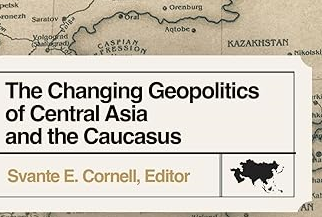In 1911, a severe earthquake occurred in the Pamir mountains caused a massive landslide that turned into a natural dam, called Usoi, now measuring 1,500 meters wide that completely blocks the Bartang valley and formed what would eventually become known as Lake Sarez that is 60 kilometers long. The lake poses a major natural hazard for the whole of Central Asia. A possible collapse of the Usoi dam would destroy the infrastructure of the Amu Daria basin, inhabited by five million people. The flood would reach the Aral Sea, destroying in its wake settlements in Tajikistan, Afghanistan, Uzbekistan and Turkmenistan. Lake Sarez derives its name from the village of Sarez that now lies 500 meters below the surface of the lake that is 3,200 meters above the sea level. Peaks, which surround the lake, rise to more than 6,000 meters above the sea level.
At a conference conducted at the Academy of Sciences of Tajikistan on October 19-21, representatives from the World Bank, the Governments of Switzerland and the United States, the Aga Khan Development Network and the Government of Tajikistan met to launch the Lake Sarez Risk Mitigation Project. The Project alerts and prepares vulnerable people for a potential flood from Lake Sarez with an early warning system for the numerous villages situated in the valley that extends downstream from the river Bartang all the way to Khorog, the administrative center of Tajikistan’s Gorno-Badakhshan province. The recent conference built off of the first conference on Lake Sarez that was held in 1997, in Dushanbe, sponsored jointly by the International Organization for Migration and FOCUS Humanitarian Assistance. In 1998, FOCUS conducted another conference in Washington DC attended by Western geo-scientists and representatives of the World Bank and USAID.
The Ismaili communities living in the Pamirs who number about 7,000 people, reside along the delta of river Bartang in isolated mountain villages, dozens of kilometers from each other. Most of those living beyond the administrative city of Khorog, do not have any technical means of communication. Since the beginning of the armed conflict in Tajikistan, these people have been under severe economic and social stress, which was caused by the withdrawal of Soviet support. The Risk Mitigation Project will establish early warning systems directly benefiting the 130,000 people, living in the villages situated along the Bartang, Murgab, and Upper Pyanj River valleys, deltas and terraces.
Within the framework of the "early warning system" program, FOCUS is implementing small-scale measures, such as ditch cleaning and irrigation canal repair. During the protracted armed conflict, the mountain passes were closed and there was no fuel for heating so the Pamiris were left with no choice but to cut down the trees. Apart from the Lake Sarez flood hazard, the villages are prone to other natural calamities, such as seasonal floods, landslides, debris flows, snow avalanches. The tree-planting project reinforces unstable slopes and protects villages from landslides and avalanches. The monitoring program at Lake Sarez will provide comprehensive data on the hydrology of the Lake and the stability of the Usoi dam. This data will also help to develop a series of flood scenarios in order to determine the degree of risk and vulnerability of downstream villages and infrastructure.
Konstantin Parshin, Radio NIC, Tajikistan




 Silk Road Paper S. Frederick Starr,
Silk Road Paper S. Frederick Starr,  Book Svante E. Cornell, ed., "
Book Svante E. Cornell, ed., "